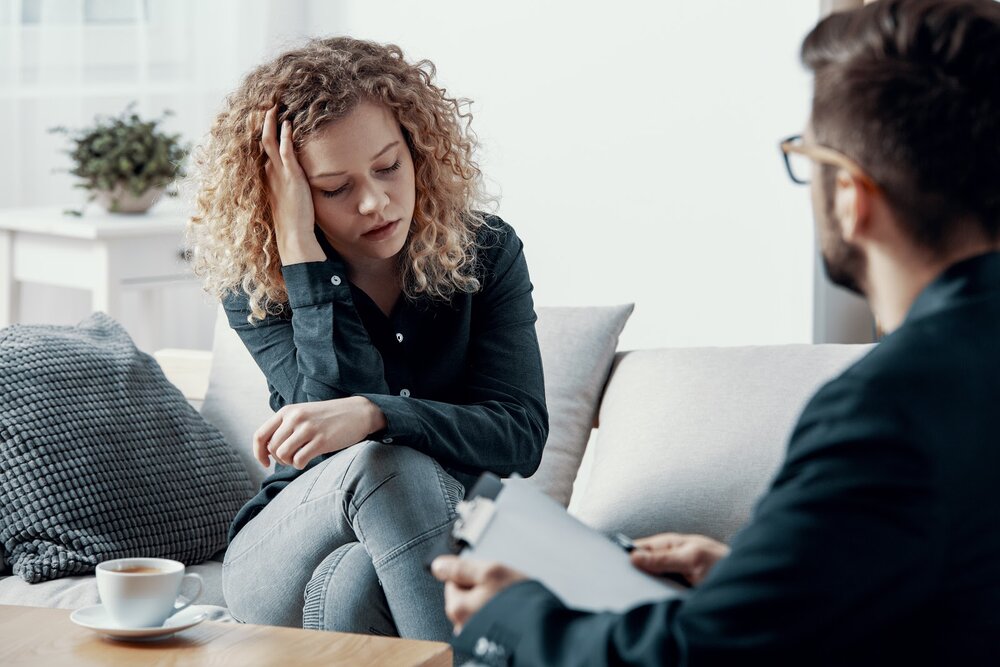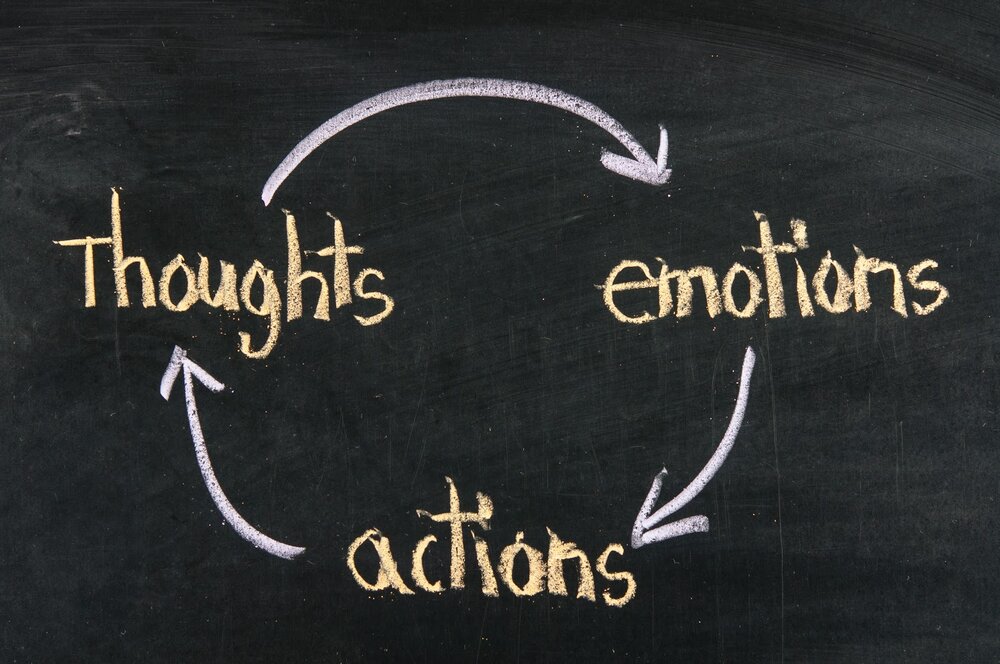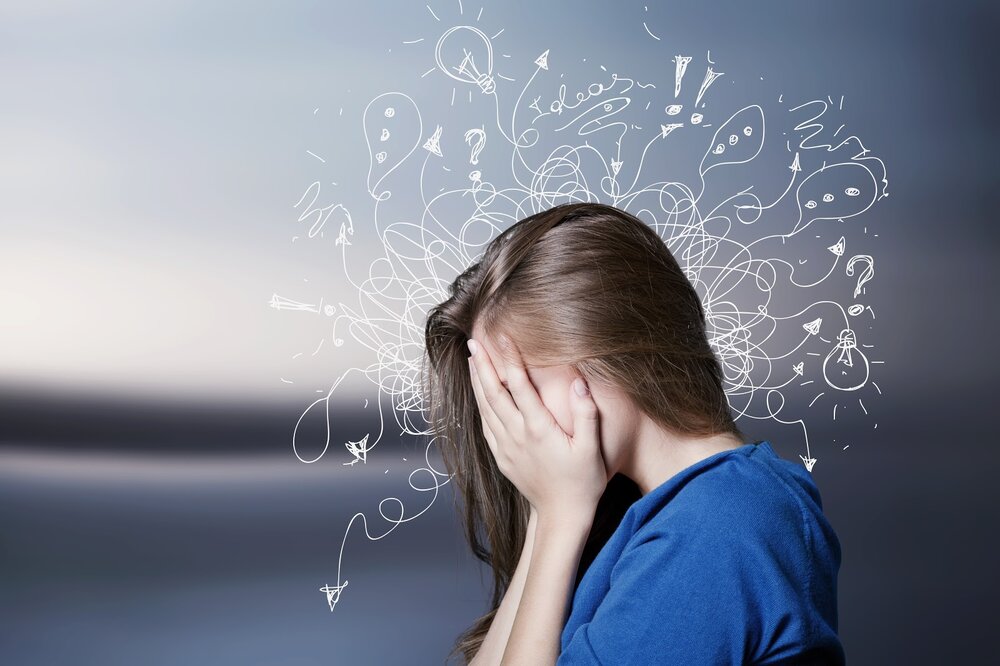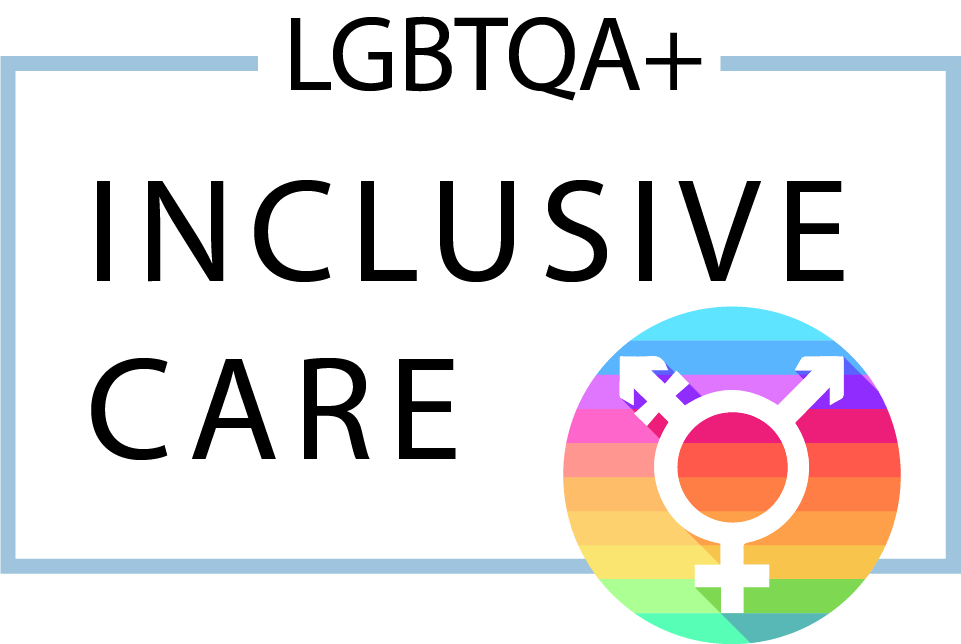
Are you wondering if your teenager is struggling with an anxiety disorder?
If so, this is the article you need to read.
The good news is the signs of anxiety in teens are relatively easy to spot.
The better news is there are reliable strategies for your teen to overcome anxiety.
In this article, you will discover:
Section 1: What Is Anxiety?
- Does Your Teen Have An Anxiety Disorder?
- What Causes an Anxiety Disorder In Teens?
- Signs of Anxiety In Teens
Section 2: How To Overcome Anxiety
- Mindfulness Exercises
- Positive Self-Talk
- Identify Unhealthy Thought Patterns
- Challenge your Emotions, Thoughts, & Beliefs
- Breathing Exercises
- Muscle Relaxation Exercises
- Exposure Therapy
- Healthy Lifestyle Choices
What Is Anxiety?
Anxiety is a persistent feeling of worry, fear, or unease.
Anxiety in Teen Statistics: Anxiety in teens has become increasingly more prevalent, with 1 in every 3 adolescents experiencing an anxiety disorder between the ages 13 to 18 -The National Institute of Health
Although these numbers are continuing to rise, 80% of teens with an anxiety disorder are not receiving proper treatment.
Anxiety disorders are highly treatable, especially if diagnosed and treated early.
Fear and Anxiety
Fear typically occurs in short powerful bursts and is directed at an object or event.
Anxiety, on the other hand, is a less intense but persistent type of fear that can linger for a long period of time.
Fear and anxiety are not always unhealthy emotions to experience.
For example, fear is very helpful in life-threatening situations.
When a bear decides to join your camping trip, fear is exactly what you need.
Fear gets your body ready to do whatever it takes to survive.

Here’s how it works
When you are in a situation that you perceive as dangerous, your body triggers your fight or flight response (parasympathetic nervous system) to help.
Your teen’s adrenal gland begins releasing hormones like adrenaline, norepinephrine, and cortisol into their bloodstream.
The body then focuses its blood flow towards the major muscles needed to run or fight (Fight or flight response).
As their blood is shunted toward these large muscle groups, it’s pulled away from all the systems in their body that aren’t needed to survive.
Blood leaves your teen’s digestive tract, brain, skin, bowels, saliva glands, etc.
The symptoms you discover below are a direct result of this change of blood flow and the hormones that have been released into your teen’s bloodstream to help them survive life-threatening situations.
As you can see, fear is a healthy response to REAL danger.
And anxiety is your body’s natural response to stressors in life.
Anxiety is a warning sign that brings awareness to your situation and lets you know areas of your life that need adjusting.
The problem begins when your teen experiences a disproportionate amount of anxiety than is needed in their present situation.
The anxiety may be more intense, last longer, and occur more frequently than what the situation calls for.
When someone experiences an excessive amount of anxiety, they have somehow come to believe that a particular situation is more dangerous than it really is.
(To learn more about other specific types of anxiety disorders, check out this video → HERE)
(To learn more about social anxiety in specific check out our blog, Social Anxiety Disorder: The Ultimate Guide to Overcome it NOW)
Does Your Teen Have An Anxiety Disorder?

Let’s first understand the difference between normal everyday anxiety and an anxiety disorder.
Fear and anxiety occur on a continuum of severity.
Imagine a scale of one to ten.
1 is little to no anxiety. You are completely calm.
10 is a full-blown panic attack. At this level, many people feel as though they might die.
A healthy individual’s baseline anxiety level would be relatively low on the scale (2 or 3) on any given day.
For Example:
When a person with a healthy anxiety level (2 or 3) experiences a stressful event, their anxiety level might increase to a 4 or 5. However, they are able to manage their anxiety, deal with the stressful event in a healthy way, and get back to normal life.
When young adults experience regular unease, worry, and anxiety that doesn’t restrict their lifestyle, working with them to learn healthy coping strategies can help to alleviate anxiety.
If a teenager can manage their fear and continue living their life normally, they probably don’t have an anxiety disorder.
Generally speaking, an anxiety disorder is diagnosed when a teen’s baseline (1-10) for anxiety is disproportionately high and occurs for more days than not within the past 6 months.
The anxiety occurs more frequently, lasts for longer periods of time, and is felt more intensely, regardless of whether or not an actual threat is present.
For Example:
In the case of an anxiety disorder, the individual’s day to day anxiety level might sit between a 5 or a 7. When someone with a moderately high level of anxiety experiences a stressful event, their anxiety level might increase to an 8 or a 9. Excessive levels of anxiety produce a number of negative symptoms, making it difficult for the individual to function in everyday life.
In anxiety disorders, teens can be crippled by fear and have little or no ability to act in spite of it.
Early Intervention is Critical

This crippling fear is not the only reason you should get your teen the help they need as soon as possible.
Teens with anxiety often withdraw from normal activity to keep themselves safe from their perceived fear. Withdrawing from social or academic experiences creates of mental event:
- Stunts the maturing process they would otherwise gain from spending time with peers, and performing well academically.
- They feel less confident in their ability to perform in similar future situations, which leads them to withdraw more often, further diminishing their development.
- Creates a deficit between your teen and their peers which acts to aggravate their anxiety further.
The longer your teen has anxiety they more they begin to work their life around their anxiety.
This may include what activities your teen chooses to engage in, the friends/relationships they form, etc.
The more your teen’s life is changed to compensate for their anxiety, the more cemented in place the anxiety becomes.

What Causes Anxiety Disorders In Teens?
Anxiety in Teen Statistics:
Anxiety in teen girls is more prevalent than anxiety in teen boys, occurring twice as often.
Researchers are not completely aware of the exact causes of anxiety.
Generally speaking, anxiety is caused by a disruption in the brain’s ability to accurately identify and react to danger.
A number of biological and environmental factors are most likely the cause of the the anxiety that develops in teens girls and boys.
Biological Factors:
- Genetics: Your teen’s DNA may make them more or less likely to develop an anxiety disorder. Having other family members who pass down anxiety related genes may predispose some people toward anxiety.
- Teen Development: The brain is not fully matured until around the age of 25. The last area of the brain to fully develop is the prefrontal cortex which is directly involved with higher level decision making and problem solving.
One reason anxiety may begin in the teenage years is because they begin to face adult problems with the problem solving capabilities that are not fully developed.
Environmental Factors:
1. Inability to Self-Soothe
The ability to self sooth is ultimately grounded in the belief that you are loved and that you are safe. Many children never internalize the belief that they are safe and lovable. When this happens, they will not be able to soothe themselves by looking inwardly to their own love and safety when a difficult event takes place.
Instead, when a child fails to internalize the belief that they are loved and safe, they look outwardly to others to feel loved and safe. Anytime a person or event threatens to take away your teens love or safety, it will likely trigger a large amount of anxiety. Without these two internalized beliefs, your teen doesn’t have what they need to believe “everything will be okay.”
2. Escalating Violence in the World
The world can seem like a scary place when the news constantly reports terror attacks and other frightening events. In the wake of these incidents, security is heightened in school to prevent shootings. Continued exposure to these types of events and this type of information can lead teens to develop an increased fear about the world they live in.
3. Pressure to Succeed
Many teens and young adults feel that the pressure to succeed in high school and college are overwhelming. There is a significant amount of fear associated with what will happen if they do not measure up to the expectations of success, competition, and achievement in today’s culture.

4. Stressful Life Circumstances
Children that are raised in an abusive or otherwise unsafe environment often form the belief that the world is a dangerous place. They learn to anticipate the worst possible outcome and perceive danger that is not actually present.
5. Learned Behavior
Children can learn anxiety producing thoughts and behaviors when they grow up around other people who model anxious lifestyles. A teen with a family member with an anxiety disorder is significantly more likely to develop one as well.
6. Traumatic Event
A single traumatic event is enough to spark concerns about similar types of events happening even if they are statistically unlikely. When this happens traumatic events can be the initial domino in a chain of mental beliefs that lead to an anxiety disorder.
7. Social Media
The pressure teens feel to compare themselves on social media platforms has become the new standard for what it means to be socially acceptable. Anxiety is likely to increase when they do not feel they can live up to the expectations of their peers online.

The most likely cause of anxiety in teens is a combination of both biological and environmental factors.
Signs of Anxiety In Teens
Anxiety symptoms in teens can begin small and gradually build-up, lingering in the background until they become noticed.
It is not uncommon for someone struggling with an anxiety disorder to be unaware of what is causing their symptoms and emotions.
Anxiety symptoms in teens may appear unrelated to any specific activity and seem to come on randomly.

Anxiety in teens has both physical, behavioral, and psychological symptoms.
Use the list below as a checklist to determine how severe your teen’s anxiety is.
Physical symptoms of anxiety in teens may include:
- Feeling restless
- Feeling on edge
- Becoming easily and excessively fatigued
- Experiencing tension in the muscles
- Difficult falling and staying asleep
- Frequent headaches
- Stomach and digestive problems
- Being easily startled
- Rapid heartbeat
- Lightheadedness
- Sweating
- Back and neck pain
- Trembling
- Nausea
Behavioral symptoms of anxiety in teens may include:
- Changes in eating habits
- Appearing withdrawn or uneasy in social situations
- Changes in school performance
- Decrease in normal interests
- Self-medication using drugs or alcohol
- Isolating from friends and family
- Avoiding activities, school, or social situations.
- Showing perfectionistic tendencies
- Emotional outbursts
Psychological symptoms of anxiety in teens include:
- Experiencing excessive fears and worries
- Difficulty handling criticism
- Worry about future events
- Frequent nightmares
- Obsessive thoughts about bad things happening
- An experience of the mind “going blank”
- Having a difficult time concentrating
- Feeling irritable
- Hypervigilance
- Repeatedly going over thoughts
- Intrusive worrisome thoughts
- Emotional distress
How To Overcome Anxiety
The most effective treatment for anxiety in teens is called Cognitive-Behavioral Therapy (CBT). CBT takes a multipronged approach to beat anxiety.
1. Mental Strategies:
CBT focuses on the thoughts (cognition) of your teen. The aspect of CBT seeks to equip your teen with new mental tools to change the way they think. The feeling of anxiety stems from unhealthy thought patterns and beliefs. As your teen learns new healthy mental habits, their anxiety will decrease. This might include:
- Mindfulness exercises
- Positive self-talk
- Education about healthy and unhealthy thought patterns
- Education on how to challenge their thoughts and beliefs

2. Behavioral Strategies:
CBT also focuses on the behavior of your teen. The physical habits your teen has (like staying up late or not eating when they should) also affects their emotional state. This area of CBT focuses on healthy physical strategies to reduce anxiety. These include:
- Breathing exercises
- Muscle relaxation exercises
- Slowly increase exposure to the feared event/ object
- Sufficient sleep
- Being active
- Eating healthy
Understanding each of these strategies in depth will give you a good idea of how to begin helping your teen overcome their anxiety.
If you feel your teen may need professional counseling to overcome their fear, this will give you a general idea of the types of exercises you can expect from a counseling office.
Mindfulness Exercises
Mindfulness exercises can help your teen be more aware of the thoughts they are allowing in their mind.
These exercises also help you teen develop the skill to control what thoughts they will allow to continue and which they will not.

You will find that only a 3 to 5 minute mindfulness exercise can change your physical and emotional state.
Before:
Before you begin the exercise below, write down:
- How are you currently breathing? (Fast/anxious or Slow/calm)
- How you feel emotionally
- How many thoughts your have
- How fast are your thoughts moving (Are they racing or are they slow?)
- What sensations do you have in your body? (Are you tense? Do you have a headache? Etc.)
After:
Answer the same questions as above and then compare.
You can also check out our Free guided mindfulness exercises we recorded just for you → HERE
Mindfulness Exercise Option 1:
- Find a comfortable place to either sit or lie down.
- While breathing deeply into and out of your stomach, focus on only the sound of your breathing.
- Be aware of the thoughts and allow them to disappear as you continually focus on the sound of your slow, deep breathing.
- If a thought comes to your mind (which is common with those new to mindfulness) imagine your thought drifting away and bring your attention back to the breath.
- Continue for 3 to 5 minutes.
Mindfulness Exercise Option 2:
This exercise is very similar to the first.
Instead of focusing on your breathing you will visualize a time or place that you felt completely safe and at peace.

As thoughts interrupt your focus on this place of safety, you identify them and allow them to drift away then refocus on the place.
This variant of the mindfulness exercise can help teens internalize the belief that they are safe.
This exercise may begin as something “silly” they don’t understand the purpose of.
At some point your teen may find themself in a stressful situation and realize they can instantly bring to mind the same feelings of peace and safety they feel in their mindfulness exercises.
Positive Self-Talk
Everyone, including your teen has an inner voice.
You might be hearing your inner voice as you read this sentence.
This inner voice can be accepting and nurturing or it can be critical.
Your teen’s inner voice constantly tells them what they believe about themself.
This is called “self-talk”.
If your teen’s inner voice is a critical, it might say “you’re so stupid”, or “no wonder you don’t have any friends.”
The more time their innervoice is allowed to speak its mind, the more the teen believes these thoughts.
(These thoughts can also lead to confirmation bias, “I knew I was stupid, look what I did now.” This can create a negative echo chamber inside a person’s mind.)
So how do we begin to solve this problem of negative self-talk?
- Identify negative reoccurring thoughts
- Find evidence to show the thought is inaccurate
- Replace the thought with a positive thought about oneself based on your evidence.

Example:
- The habitual negative thought is: “You’re so stupid”
- Evidence against the claim: “I just got an A on my English test yesterday.”
- “I’m really smart in some areas and I have some areas I can work on too.”
This type of thinking can be expanded out further by finding overwhelming evidence to the contrary.
3. “I have A’s and B’s in all my classes. I tutor Sam in Math and my friends tell me they wish they could pick up on stuff like I can. I’m not really stupid at all.”
Identify Unhealthy Thought Patterns
Unhealthy patterns of thought about how we see the world are called cognitive distortions.
These unhelpful thought patterns often go unnoticed in our minds and create anxiety.
We will cover some of the most common distortions of thinking below.
Overgeneralization:
Teens who overgeneralize take one life experience and draw large conclusions from it. “If one guy hurt me, all guys will hurt me.”
Emotional Reasoning:
This distortion occurs when someone holds the belief that no matter what they feel, it’s always true.
Catastrophizing:
This type of thinking habitually anticipates catastrophe, “I said something stupid. They’ll probably never talk to me again.”
Personalizing:
This distortion of thought leads people to believe that anything their peers think or do is somehow directed at them. “They are probably talking bad about me.”

Discounting the Positive:
Teens who discount the positive may not see the positive or may know what the positive is, but they don’t believe it could be the case for them.
Example:
If your teen studied hard for a test and got an A, they might conclude their grade happened by luck rather than effort. Or they may think the grade is not that meaningful because of other negative things happening.
(To learn about more kinds of unhealthy thinking, check out this article → HERE)
Challenge Your Emotions, Thoughts, & Beliefs
Teens with anxiety have a common misconception. They assume that if they think or feel something, it must be true.
Of course this is not always true.
People often think inaccurately.
Imagine for a moment that you believed all of your thoughts.
Not only this but you don’t have any mental or behavioral tools to calm yourself.
You begin to think to yourself:
“Why isn’t John texting me back? I probably said something stupid and now he doesn’t want to talk to me anymore. He probably hates me now.”
What emotion do you feel as you think these types of thoughts?
Anxiety.
If you think thoughts like this on a regular basis and believe them, you will inevitably feel a lingering sense of anxiety.
Helping your teen critically examine their thoughts is an important strategy when overcoming anxiety. Questions like these below can help to bring clarity to your teen’s emotions, thoughts and beliefs.
Q: What evidence do I really have to think/ believe this?
Q: How did I come to this conclusion?
Q: Is this choice based on emotion or reason?
(For more ideas on what you can do to help your teen, check out this article → HERE)
Breathing Exercises


Most people don’t realize that there are two types of breathing.
The body uses one type of breathing when it perceives a threat and is preparing for fight-or-flight.
The body uses a second type of breathing in times of restfulness, safety, and love.
- Anxious Breathing: Fast shallow breathing into the chest
- Calm Breathing: Slow, deep breathing into the stomach
Your teen uses these two types of breathing automatically depending on their level of anxiety.
The great news is that purposeful changes in behavior will also change your teens emotional state.
This is to say that if your teen notices when their breathing is becoming anxious, they can consciously control their breathing.
After two minutes of purposeful calm breathing, anxiety will often be noticeably reduced or alleviated.
Try this breathing exercise:
First Time Note: The first time you or your teen do this breathing exercise, write down how you feel before and after the exercise. If it’s useful, use a 1-10 scale to answer the before and after questions below. When you finish, compare your notes to see how effective this strategy really is.

Before:
Before you begin, write down:
- How are you currently breathing? (Fast/anxious or Slow/calm)
- How you feel emotionally
- How many thoughts your have
- How fast are your thoughts moving (Are they racing or are they slow?)
- What sensations do you have in your body? (Are you tense? Do you have a headache? Etc.)
After:
Answer the same questions as above and then compare.
Breathing Exercise:
- Find a quiet and comfortable spot to sit or lie down.
- Begin to breathe deeply into your nose and out of your mouth.
- Breath deeply into and out of your stomach (not your chest)
- Inhale for four seconds. Hold your breath for three seconds and release for four second.
- Repeat this with no interruptions for no less than 3 minutes.
Muscle Relaxation Exercises
Muscle relaxation exercises work by tensing one muscle group at a time for a specific amount of time and then relaxing.
This is often referred to as progressive muscle relaxation. Breathing is often a part of this relaxation exercise as well.
Before:
Before you begin the exercise below, write down:
- How are you currently breathing? (Fast/anxious or Slow/calm)
- How you feel emotionally
- How many thoughts your have
- How fast are your thoughts moving (Are they racing or are they slow?)
- What sensations do you have in your body? (Are you tense? Do you have a headache? Etc.)
After:
Answer the same questions as above and then compare.
Relaxation Exercises:
- Find a quiet and comfortable spot to sit or lie down.
- Breathe into your stomach and out of your stomach (3 seconds in, 3 seconds hold, 3 seconds out).
- As you inhale for three seconds, tense your neck until it’s as tight as you can go.
- Hold your breath and tense your neck for three seconds.
- Slowly release your breath and the tension in your neck over three seconds.
- Repeat for shoulders, arms, stomach, thighs, calfs, feet, etc.
Exposure Therapy
The more your teenager withdraws from their fears, the less confidence they have to face the anxiety causing stressor.
This also works the same in reverse.
The more a young person is exposed to their stressors, the more confident they feel when they encounter it again.
This is compounded as they develop new, healthier beliefs during these interactions.

With this said, tolerance is built slowly over time.
Facing too much fear at the same time can be overwhelming and have adverse effects.
Work with your teen to discover which situations produce anxiety for them.
List these stressors on a scale of 1-10 (provided below). The least anxiety producing experience being a 1 and the most, 10.
Put as many stressors on the list as your teen can think of.
1 – Low Anxiety Behavior:______________________________________
2: _________________________________________________________
3: _________________________________________________________
4: _________________________________________________________
5 – Moderate Anxiety Behaviors: ________________________________
6: _________________________________________________________
7: _________________________________________________________
8: _________________________________________________________
9: _________________________________________________________
10 – High Anxiety Behaviors:____________________________________
Begin by encouraging your teen to face and master the behaviors and situations listed in the 1-2 range of the chart first.
As they feel they are mastering their fear over these items, encourage them to move toward the 3-4 range.
Repeating this process and supporting them as they do so can help them increase in confidence and ultimately internalize their sense of safety in stressful situations.
Healthy Lifestyle Choices
Many people overlook the importance of having a healthy lifestyle.
While the suggestion to make healthier lifestyle choices may seem trivial, they alleviate anxiety in an important way.
Life often presents us with challenging circumstances that we have little or no control over.
Unhealthy lifestyle choices add unnecessarily stress to what your teen is already going through.
By making healthy lifestyle choices you will reduce your overall stress so that you can more comfortably face life’s challenges.

Below are some lifestyle choices that people often overlook:
- Getting regular exercise
- Maintaining effective nutrition
- Getting enough sleep
- Limiting Social Media
- Spending uninterrupted time in nature
- Forming authentic connections
Click here for more information on Anxiety Therapy.
If you are seeking counseling in New York City, contact us today to learn more about our services!
Request a Consultation
Fill out the form below to have one of our therapists reach out to discuss consultation services in New York City.
MindWell Psychology Contact Information
Phone: 646.809.5440
Email: intake@mindwellnyc.com






